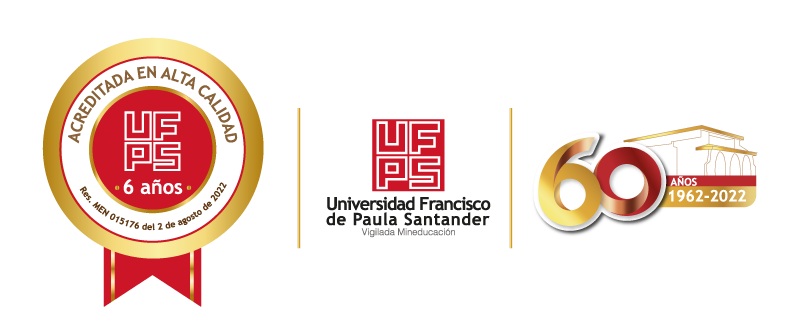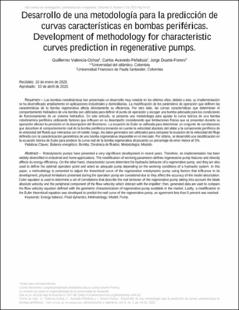Desarrollo de una metodología para la predicción de curvas características en bombas periféricas
Development of methodology for characteristic curves prediction in regenerative pumps
Artículo de revista
2020-05-01
AiBi Revista de Investigación, Administración e Ingeniería
Colombia
Las bombas rotodinámicas han presentado un desarrollo muy notable en los últimos años; debido a esto, su implementación
se ha diversificado ampliamente en aplicaciones industriales y domiciliarias. La modificación de los parámetros de operación que definen las
características de la bomba regenerativa afecta directamente su eficiencia. Por otro lado, las curvas características que determinan el
comportamiento hidráulico de una bomba son utilizadas para definir el punto de operación y escoger una bomba adecuada para las condiciones
de funcionamiento de un sistema hidráulico. En este artículo, se presenta una metodología para ajustar la curva teórica de una bomba
rotodinámica periférica utilizando factores que influyen en su desempeño considerando que limitaciones físicas que se presentan durante su
operación afectan la precisión en la descripción del fenómeno. La ecuación de Euler es utilizada para determinar un conjunto de correlaciones
que describen el comportamiento real de la bomba periférica tomando en cuenta la velocidad absoluta del alabe y la componente periférica de
la velocidad del fluido que interactúa con el rodete; luego, los datos generados son utilizados para comparar la ecuación de la velocidad del flujo
definida con la caracterización geométrica de una bomba regenerativa disponible en el mercado. Por último, se desarrolló una modificación en
la ecuación teórica de Euler para predecir la curva real de la bomba regenerativa alcanzando un porcentaje de error menor al 5%. Rotodynamic pumps have presented a very significant development in recent years. Therefore, its implementation has been
widely diversified in industrial and home applications. The modification of working parameters defines regenerative pump features and directly
affects its energy efficiency. On the other hand, characteristic curves determine the hydraulic behavior of a regenerative pump, and they are also
used to define the optimal operation point and select an adequate pump depending on the working conditions of a hydraulic system. In this
paper, a methodology is presented to adjust the theoretical curve of the regenerative rotodynamic pump using factors that influence in its
development; physical limitations presented during the operation pump are considered due to they affect the accuracy of the model description.
Euler equation is used to determine a set of correlations that describe the real behavior of the regenerative pump taking into account the blade
absolute velocity and the peripheral component of the flow velocity which interact with the impeller; then, generated data are used to compare
the flow velocity equation defined with the geometric characterization of regenerative pump available in the market. Lastly, a modification in
the Euler theoretical equation was developed to predict the real curve of the regenerative pump, an agreement less than 5 percent was reached.
Descripción:
Development of methodology for characteristic curves prediction in regenerative pumps.pdf
Título: Development of methodology for characteristic curves prediction in regenerative pumps.pdf
Tamaño: 837.2Kb
 PDF
PDF
 LEER EN FLIP
LEER EN FLIP
Título: Development of methodology for characteristic curves prediction in regenerative pumps.pdf
Tamaño: 837.2Kb
 PDF
PDF
 LEER EN FLIP
LEER EN FLIP
















